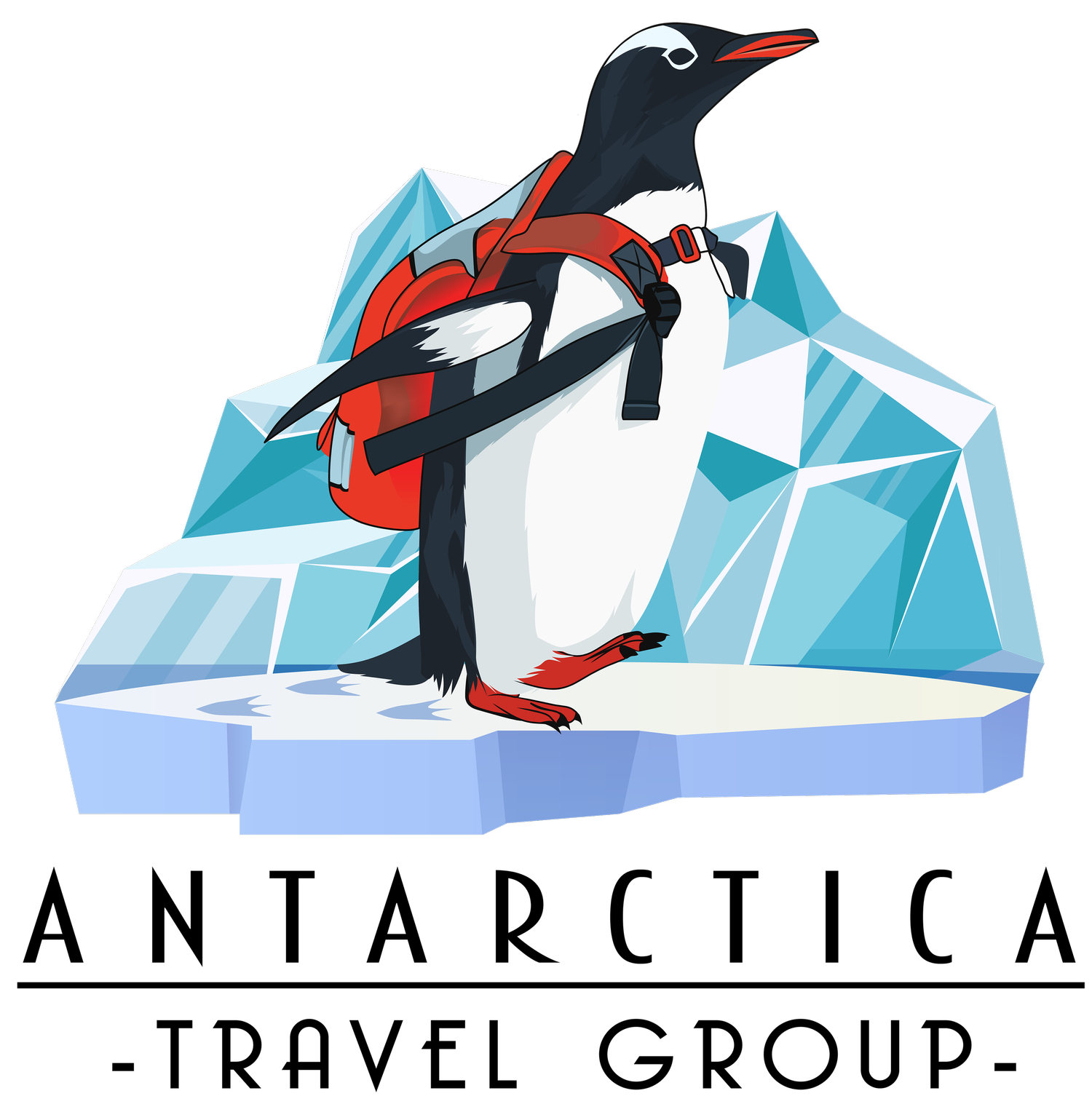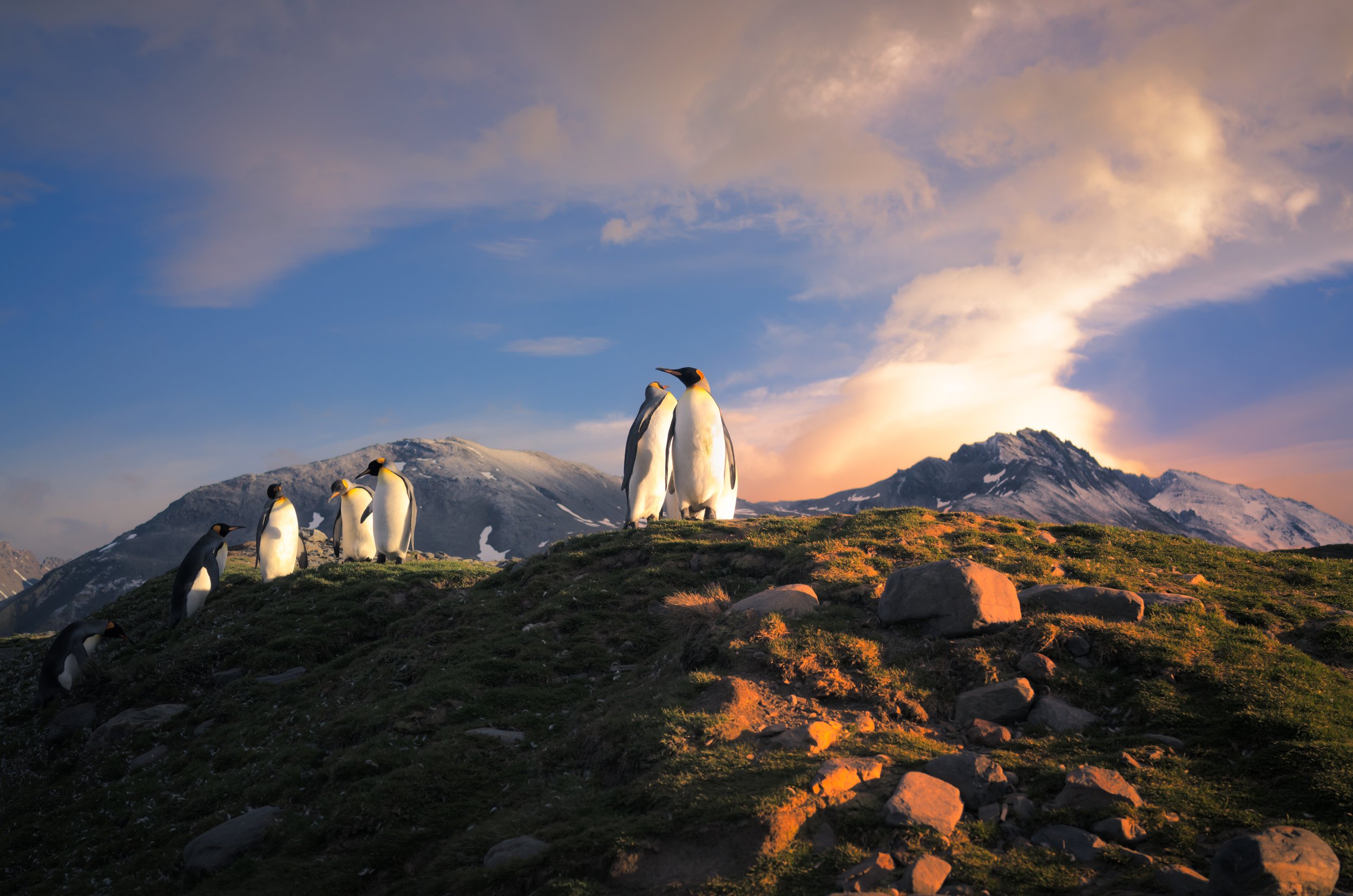What’s the big deal with South Georgia?
I've lost count of how many times I've been asked
"Is South Georgia worth it?"
One of my fellow guides saw this question coming up in the Antarctica Travel Group Facebook group, and when I said I would get to writing a blog post about it, he replies: "Well, that's an easy blog to write, just put ‘Yes’... Blog, done."
So, in the word of Jamie Watts, "Yes" South Georgia is worth it. Let's look at why, and what makes South Georgia so unique.
When the majority of travelers begin their research to visit Antarctica, they are usually presented with the two main itineraries that operate in the South. The "Classic Antarctica", which usually runs 9-13 days, and the "Antarctica, South Georgia and Falklands (Las Malvinas)" itineraries that typically run 19-22 days.
There are slight variations in each company's offerings for these itineraries, as well as trips that offer crossing the Antarctic Circle, Weddell Sea, and Fly cruises; but the two previously mentioned will be the ones we focus on.
So where is South Georgia? It's not in the U.S., below North Georgia. South Georgia sits 2,024 KM (1258 miles) from Ushuaia, the Southern tip of South America, about 800 km past the Falkland Islands. It's about a three-day sail from Argentina or the Peninsula depending on what ship you're on and what the sea conditions are like. It's because of this distance that you'll see the itineraries for these trips often span a minimum of fifteen days. It takes two days to transit the Drake passage and reach Antarctica. You'll spend an amazing few days in Antarctica before continuing on to sail across the Scotia Sea to reach South Georgia and the South Sandwich Islands (its official name). Some ships run shorter trips but you'll be cutting down your time making landings because the transit times still remain the same.
Here is what a typical SG/FK/AA route may look like. Not all companies’ routes are identical but I would say this is the most common. Trips will vary if they run clockwise or counterclockwise. It just depends on the scheduling of landing sites.
How is South Georgia different than Antarctica?
The first difference you'll notice is the landscape. Where Antarctica and the surrounding islands are glaciated landscapes with massive snow-capped mountain peaks and fields of icebergs and brash ice... South Georgia is significantly less white and a lot more green. South Georgia, being much further North, allows for all types of plant life and lichens to grow. But by no means is South Georgia not glaciated. There are plenty of stunning glaciers to be found all around the island.
However, less ice works in SG's favor when it comes to visiting. Our landing sites are often not nearly as constrained as they are in Antarctica because we don't have the same avalanche and crevasse hazards to navigate; allowing for longer walks and treks around the island.
But what is so significant about South Georgia and why do people want to visit there?
Well...that's easy. The wildlife. There is no place on Earth like it.
The main attraction and the reason people travel all this way to visit South Georgia is for the King Penguins. You can't find them in Antarctica.
Not only do you only find them here...you find them in numbers you could never imagine. South Georgia is home to well over 1,000,0000 King penguins and their chicks. A big bonus is that King penguins are on a seventeen-month breeding cycle, which means that no matter which month you visit during the Southern summer; you'll always see King penguin chicks.
There are also a number of other species of penguins you can see during a South Georgia itinerary you won't see in Antarctica.
Aside from the King penguins you can expect to also see Gentoo, Chinstraps and Macaroni penguins as well. South Georgia is home to "millions" of Macaroni penguins! It's quite difficult to get exact numbers, be we know it's easily a seven-figure total.
Some of the other wildlife highlights are the different types of seals you'll see here, including the Antarctic Fur seal, Elephant seals and Leopard seals. For me, the Elephant seal is one of the major attractions in SG; especially in the early part of the season through November when you see the 'Weaners' (baby elephant seals that have just finished nursing from their mothers).
These pups can be just a couple weeks old when we visit in November. We will see them throughout the southern summer season, but there's a small window in November through December when we can visit them in a place called Gold Harbor when thousands of them are congregated on one beach.
Elephant seals are much more abundant in SG and we can go an entire season on the Antarctic Peninsula without seeing them. Over half of the world's Southern Elephant seal population lives in South Georgia. Through the entire season, we frequently see adolescent males jousting on the beaches practicing to become a dominant beach master.
Fur seals are seen all season long, and their numbers are so staggering that we've actually had to cancel landings before because we couldn't find a suitable landing spot due to them taking over the beach. January through March are prime months for fur seal pups, and we often see them born in front of our very eyes through January. Mid November through late December is when we often find the large males on the beach looking to secure their mating partners and can often display signs of be excessively territorial.
It's not uncommon to see the fur seal pups nursing with their mother either.
Leopard seals are also found on the Peninsula, but we have just as good a chance at seeing them in South Georgia as well.
When we get to the Falkland Islands (Las Malvinas), we have the chance to encounter a couple more penguin species not found in Antarctica or South Georgia. The Magellanic and the Northern Rockhopper penguins.
South Georgia and the Falklands are an absolute must for any serious birder. Home to 75-100 million seabirds (yes that number is correct), South Georgia is the Earth's largest concentration of sea birds. You can see a wide variety of albatrosses, including the Wandering, Light-mantled Sooty, Grey Headed and Black-browed albatross. There are also many types of Petrel including the Wilson's Storm petrel, Cape petrel, Diving petrel as well as Northern and Southern Giant petrel. The most coveted for birders, the Snow petrel, is also found in South Georgia. Cormorants, prions, and skuas are among some other birds we will likely encounter on our trip.
Hopefully, while we're there, we'll get to see some of the birds that are endemic to South Georgia such as the South Georgia pipit and South Georgia shag. If you're REALLY a birder, then you must make sure the Falkland Islands are on your itinerary. The list of birds is too long for this blog, but you'll see all sorts of ducks, caracaras, geese, flycatchers and the Cobb's wren (which you can only see in the Falklands).
South Georgia is also rich with history, and is closely connected with the Shackleton story of 1914 when his ship, the Endurance, was crushed in the pack ice of the Weddell Sea. We often attempt to visit historical landmarks such as early 20th century whaling stations and shipwrecks. We will also attempt to visit Shackleton's grave in Grytviken and share a toast to the Boss.
South Georgia trips may not be for everyone. They will require more time away from work and home, and they certainly come at a higher price point. However, if you're able to stretch your time and your budget just a bit, I am not exaggerating when I say it's 1000% worth it. I know too many people who have made the "once" in a lifetime trip to Antarctica only to return shortly after learning about South Georgia.
Words can only describe South Georgia so much. It's truly something you need to experience for yourself to understand. When you step foot on South Georgia for the first time and you're greeted by the sounds of 200,000+ King penguins, South Georgia will speak for itself.
If you're interested in visiting South Georgia, please send an email, use the contact form or fill out a trip request form below. We can't wait to hear from you!
If you have questions or would like more information added to this post, please let us know!
- Neill













